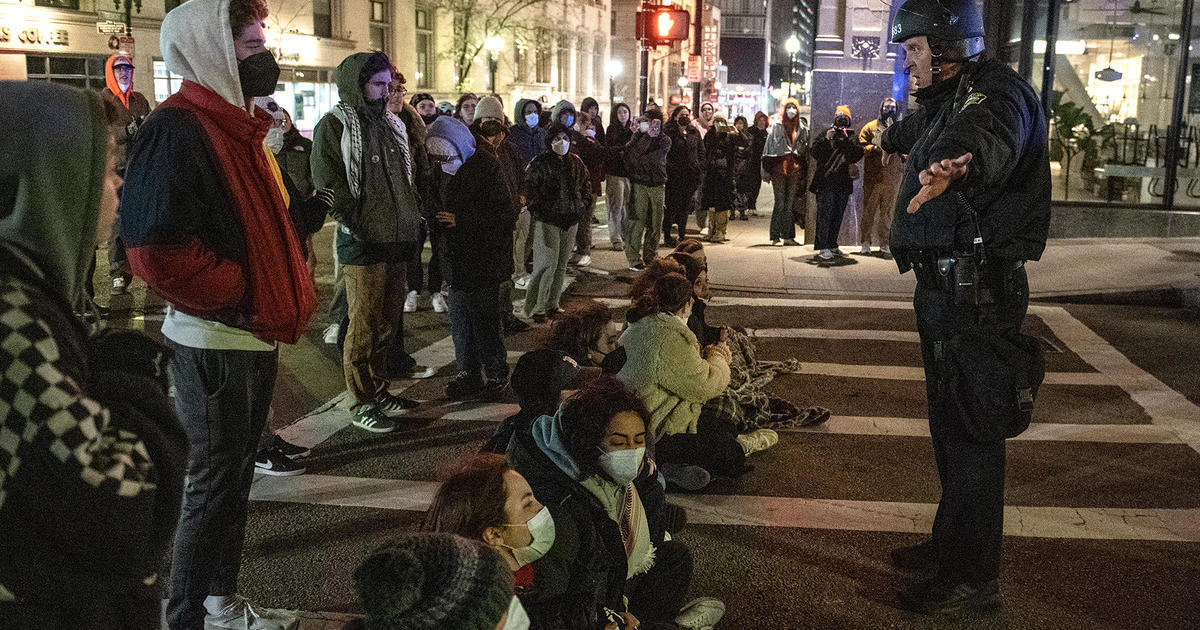Winter weather forecast for Boston area: Slightly below average snowfall and a bit warmer
BOSTON - It starts every year as the leaves begin to change.
"I have a lot of acorns...I saw this wooly caterpillar...it was dry, what does that mean?"
A meteorologist can't grab some milk at the grocery store or drop their kids off at school without getting peppered with questions. Occupational hazard and a fun one (most of the time).
There's no denying that New Englanders start thinking about winter long before it's actually winter. And with good reason - it can be the most difficult season to navigate in this part of the country. A little more is on the line this particular winter with warnings about rolling blackouts and the high cost of energy expected to stretch budgets. A harsh stretch could be serious business...while a mild one might be welcome.
Of course, we have no control over what will play out over the next several months! But we can at least look at how global factors are lining up and explore what some recent trends might mean for us. As always, a seasonal outlook is only marginally better than a coin flip. Forecasters can try to read the tea leaves, but I believe it will still be years before seasonal outlooks are consistently accurate enough to plan life around. That said, it's entertaining and educational to try!
ENSO: A rare "Triple-dip"
The starting point almost every year is the El Nino Southern Oscillation, or ENSO. For the third year in a row, we are seeing La Nina conditions in control. That means waters near the equatorial Pacific are cooler than average. It turns out that this is the third year in a row with La Nina, a rare "triple-dip" that has only occurred a couple of other times in the modern era (since 1950).
Those other two stretches were 1973-76 and 1998-2001. So what happened during those periods here in the Boston area? All six of those winters featured near or below average snowfall in the city. So far during this stretch, we've also had near to below average snowfall locally.
La Nina can come in a variety of flavors. We've had a couple of really big winters in a La Nina pattern, and plenty of duds as well. They tend to favor more cold outbreaks early on and fewer outbreaks later in winter. They are also rollercoaster rides, often featuring big cold snaps and big thaws. Rarely are they steady and stable for the majority of the season. An extreme example of this was the 2017-18 winter, which featured a major cold snap from Christmas into early January, followed by the warmest February on record when a couple of towns hit 80 degrees.
Global Oceans:
Aside from where La Nina resides, we also like to look at the global oceans as a whole. When we do that, we see a lot of similarity with the first year in this current "triple-dip" stretch, 2020. They're not identical, but they're pretty close with widespread warmer than average waters in the north Pacific and north Atlantic. That autumn also had an extreme run of 70s to start November, just like this one. We just tied 2020 for the most 70s on record during November with six of them. Would you believe we're also nearly tied for average temperature this year in Boston, in sixth place for warmest on record to-date vs. ninth to-date in 2020. On top of that, 2020 was also a very dry summer.
The November Factor:
Speaking of November, we tend to view it as a good harbinger of the winter ahead. In that regard, this year has some conflicting numbers. We're sitting in the Top 3 warmest Novembers on record right now, but the pattern has flipped to quite a bit of cold. Is the cold shot a head-fake, or should we trust the generally mild November stats?
If you take the top 13 warmest Novembers on record in Boston, every single one had at or below average snowfall the following winter. Every November with at least four days in the 70s (there are nine of them) also had at or below average snowfall for the season.
I've always believed in November pointing the way, though we got burned by it in 2019 when a cold November was followed up by an absolute dud of a winter. It was our worst outlook over the past decade and a reminder no one signal leads the way.
The Polar Vortex:
Great at getting headlines but not always well understood, the polar vortex can be a key player during winter. It's a river of fast-moving winds tens of thousands of feet up in the atmosphere, but it can help shape patterns in places we care about (closer to the surface) if it connects to those lower levels. When the polar vortex is strong, the jet stream tends to be more circular around the arctic with fewer cold air outbreaks. When it's weak, colder air can invade the mid-latitudes more easily. And when there's a sudden stratospheric warming event, it can split and really let loose with some extreme weather.
So far in this early season it has been getting stretched like a rubber band. Many times, a polar vortex getting disturbed early can lead to strengthening farther down the road. One that's stronger early on in the season can often break down late in the game. My feeling is that you usually end up paying the winter bill eventually, whether it be early or late. It's hard to completely miss out on all of it.
Indications are it may start trying to strengthen heading into December. Keep in mind that you cannot really predict the polar vortex more than a couple of weeks in advance, so it's more of a variable to watch during winter vs. something we can figure out before the season is underway.
Computer models:
Some years, the models do an excellent job at predicting the theme of the season. Other years, they bomb. So it's a tool in our toolbox but not a silver bullet we can trust. The most recent seasonal models have spit out a somewhat generic La Nina look with a colder/snowier look early in winter and more ridging/milder conditions heading deeper into the season.
The Forecast!
You may be drawing your own conclusions if you've made it this far, but here's my thinking on how this winter may go. I'm currently thinking that we should favor cold shots and snow chances up front as we move into December. Heading toward January and especially February, the pattern may start to back off of the consistent cold and feature some thaws working in. I'd consider it likely that the milder periods will outweigh the cold snaps for a milder than average season as a whole. That said, I'm not expecting a much milder than average winter like some recent editions.
When it comes to snowfall - well that's the ultimate crapshoot.
One storm hitting or missing can make all the difference (see: last year) and that's impossible to forecast well in advance. But given the historical trends of "triple-dips," warm November numbers, and years like 2020 (38.6") and 2000 (45.9") being good recent analogs...it makes sense to favor slightly below average snowfall in Boston. Let's call it 30-to-40 inches. This would make it a fairly standard New England winter overall.
Big Picture:
Are big winters a thing of the past? I doubt it.
The last colder than average, big winter was the record breaker in 2015. It came during a stretch of very snowy winters in the 2010s. Nature loves to work in cycles and seek balance, and we were due to see a stretch of somewhat less snowy winters. Perhaps we are in exactly that kind of period now.
But when it comes to temperatures, winter is our fastest warming season. We basically start with "milder than average" every year and then look for any reason to believe that won't be the case. There's nothing glaring going into this one now, so we'll once again look for this winter to be milder than average as a whole. Of course, there are often still some big swings from month to month and cold blasts are likely to be in the mix.




